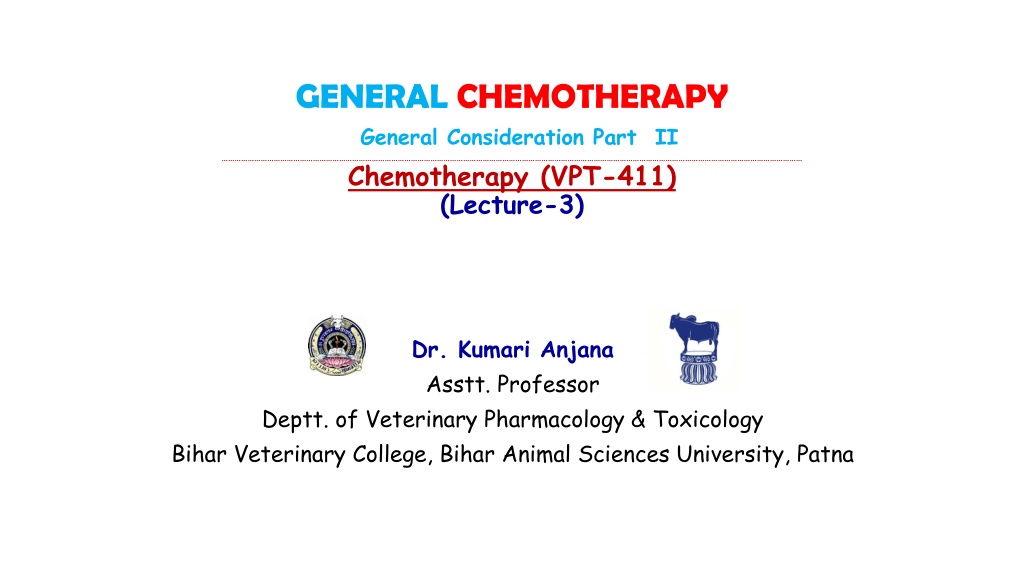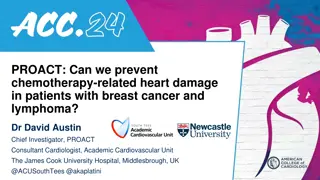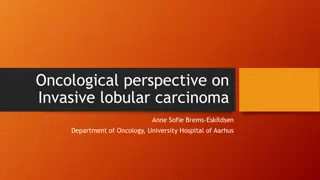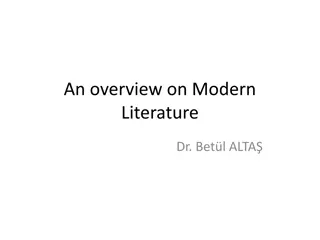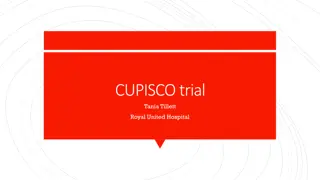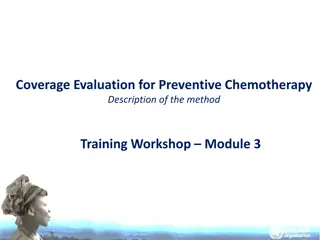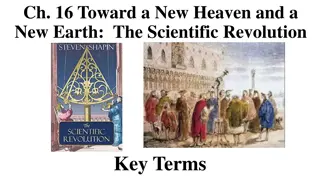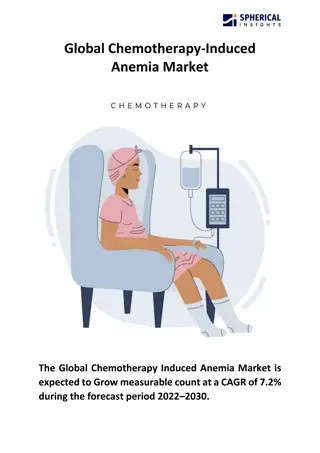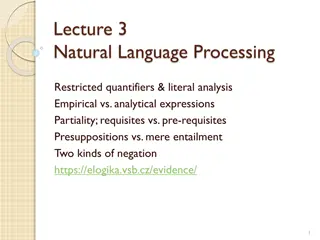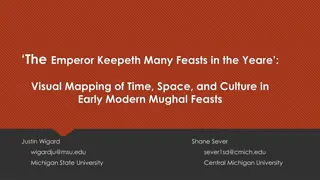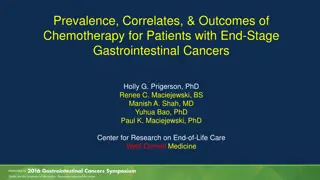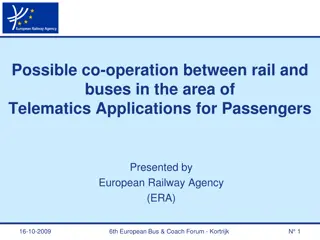History of Chemotherapy: From Empirical Use to Modern Era
The history of chemotherapy is divided into three phases, starting from the empirical use of compounds in ancient times to the modern era marked by targeted drug development. Ehrlich's pioneering work in the late 19th to early 20th centuries laid the foundation for understanding the selective toxicity of certain compounds towards microbes, leading to the concept of "magic bullets." His research on cell receptors and drug affinity revolutionized chemotherapy, eventually giving rise to modern chemotherapeutic agents.
Download Presentation

Please find below an Image/Link to download the presentation.
The content on the website is provided AS IS for your information and personal use only. It may not be sold, licensed, or shared on other websites without obtaining consent from the author.If you encounter any issues during the download, it is possible that the publisher has removed the file from their server.
You are allowed to download the files provided on this website for personal or commercial use, subject to the condition that they are used lawfully. All files are the property of their respective owners.
The content on the website is provided AS IS for your information and personal use only. It may not be sold, licensed, or shared on other websites without obtaining consent from the author.
E N D
Presentation Transcript
GENERAL CHEMOTHERAPY General Consideration Part II Chemotherapy (VPT-411) (Lecture-3) Dr. Kumari Anjana Asstt. Professor Deptt. of Veterinary Pharmacology & Toxicology Bihar Veterinary College, Bihar Animal Sciences University, Patna
Content of the chapter History The period of empirical use Ehrlich s phase (1890-1935) The modern era of chemotherapy
History The history of chemotherapy may be divided into 3 phases: The period of empirical use Ehrlich s phase of drugs and organometllic compounds (1890-1935) The modern era of chemotherapy
Pre Ehrlich periods/The period of empirical use In this period some compounds were used empirically to treat different diseases. Sometimes adverse effects were also monitored due to empirical use of the compounds. Mouldy curd by Chinese on boils, Chaulmoogra oil by Hindus in leprosy, Chenopodium by Aztecs for intestinal worms, Mercury by Paracelsus (16thcentury) for syphilis Cinchona bark (17thcentury) for fevers.
Ehrlichs phase of dyes and organometallic compounds (1890-1935) Discovery of microbes in the later half of 19thcentury and that they are the cause of many diseases. Ehrlich toyed with the idea that if certain selectively stain they could also be selectively toxic to these organisms, and tried methylene blue, trypan red etc. dyes microbes, could Fig: Paul Ehrlich Source : Google image
Ehrlich called such compounds "Magic bullets". For the therapeutic utility of compounds he introduced the term "chemotherapeutic Index", a ratio of maximum tolerated dose of a drug to its minimum curative dose. Further, the term chemotherapeutic index was replaced by therapeutic index, a ratio of LD50 to ED50. Ehrlich expressed an idea that cell membrane contains chemical groups or 'receptor' which with essential materials like oxygen and caused their up take by cells.
He told that chemicals contain two groups-one group attach to the cell receptor (haptophore) and another pharmacological effect or toxic effect (toxophore). group which caused specific It is his idea that a drug can produce curative or toxic effect depending upon its affinity for the parasite or host. Therefore, a compound which has high affinity for the host tissue (organotropic) may be toxic. Where as, if the compound has high affinity for parasite (parasitotropic) may be curative. Based on the above hypothesis, Ehrlich introduced arsephenamine, the first really effective chemotherapeutic agent in man, for the treatment of syphilis.
Developed Arsenicals-Atoxyl for sleeping-sickness, Arsphenamine in 1906 and Neoarsphenamine in 1909 for syphilis. Father of chemotherapy He coined the term chemotherapy because he used drugs of known chemical structure and showed that selective attenuation of infecting parasite was a practical proposition. Awarded Nobel Prize in 1908 in medicine.
The modern era of chemotherapy Domagk, Mietsch and co-workers in 1935 by demonstrating the therapeutic effect of prontosil, a sulfonamide dye, in pyogenic infection. It was soon realized that the active moiety was paraamino benzene sulfonamide, and dye part was not essential. Sulfapyridine (M&B 693)-first sulfonamide to be marketed in 1938. Fig: Domagk Source : Google image
Nitti, Bovet and Fuller are also known as trefuel brothers, pointed that prontosil produce its therapeutic efficacy to its conversion into sulfanilamide in the body. Since then a variety of sulphonamides have been synthesized. Though, sulfonamide was prepared by Gelmo in 1908, but years passed before its therapeutic value was discovered.
Antibiosis : The phenomenon of antibiosis was demonstrated by Pasteur and Jobert in 1877 : growth of anthrax bacilli in urine was inhibited by air born bacteria. Babes in 1885, using culture media, established that one bacterium could elaborate a substance that would stop the growth of another. Emmerich and Low in 1889, while working on the organism pseudomonas aeruginosa discovered that extract of this organism in high dilution could destroy a variety of pathogenic cocci as well as diphtheria, cholera, typhoid and plague organisms.
Sir Alexander Fleming (1929) while working on Staphylococcal varients found that a diffusible substance was elaborated by penicillium mould which could destroy staphylococcus on the culture plate. He named this substance penicillin but could not purify it. Chain and Florey followed up this observation in 1939 which culminated in the clinical use of penicillin in 1941. Because of the great potential of this discovery in treating war wounds, commercial manufacture of penicillin soon started.
1940s Waksman and his colleagues undertook a systematic search of Actinomycetes as source of antibiotics and discovered streptomycin in 1944. In 1944, streptomycin was reported by Schatz, Bugie and Waksman from Steptomyces griseus waksman defined 'antibiotic' as a chemical substance produced by micro-organisms having property of inhibiting the growth or destroying other micro-organisms in high dilution. The streptomycin was found effective against many gram- negative micro organisms and Mycobacterium tuberculosis.
Actinomycetes - treasure-house of antibiotics. Tetracyclines, chloramphenicol, erythromycin and many other followed. Domagk, Fleming-chain-Florey Noble prize Waksman
